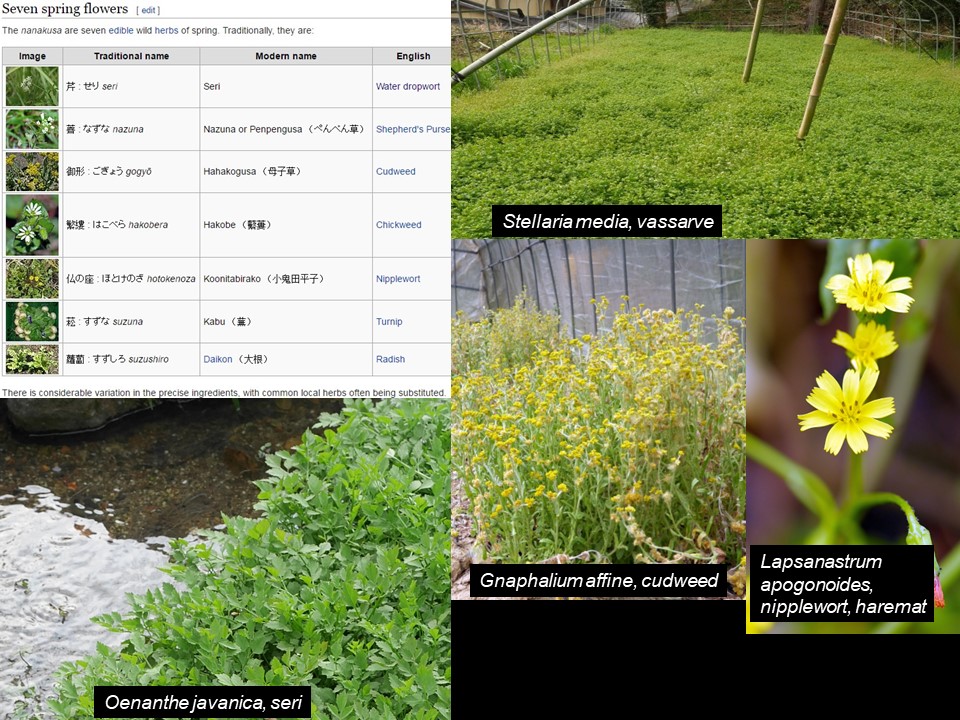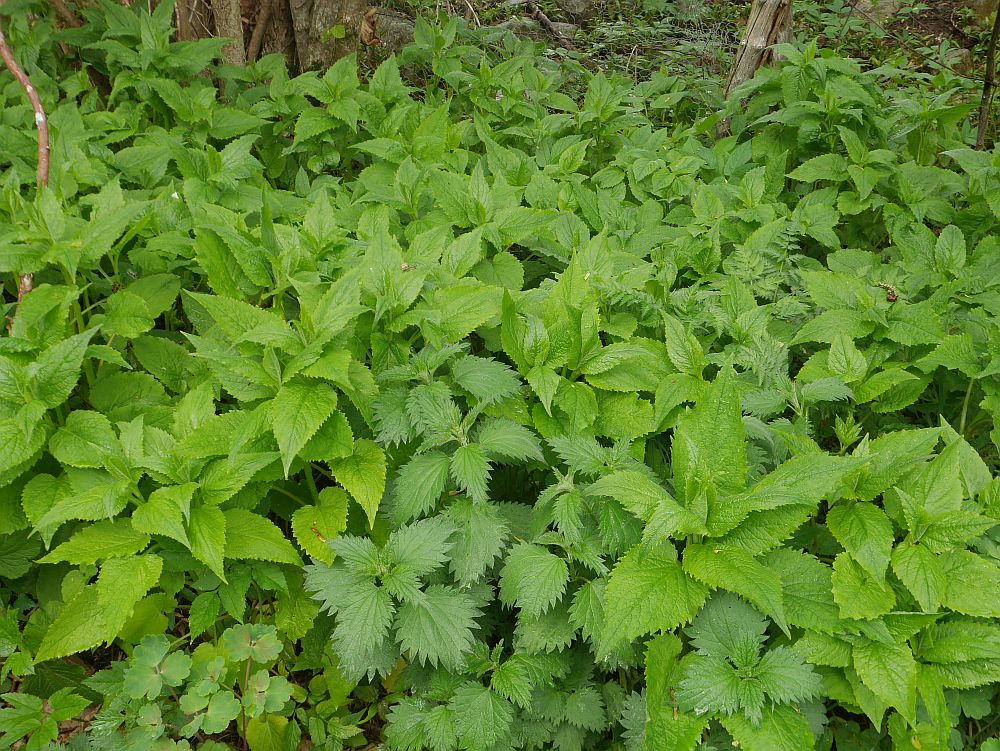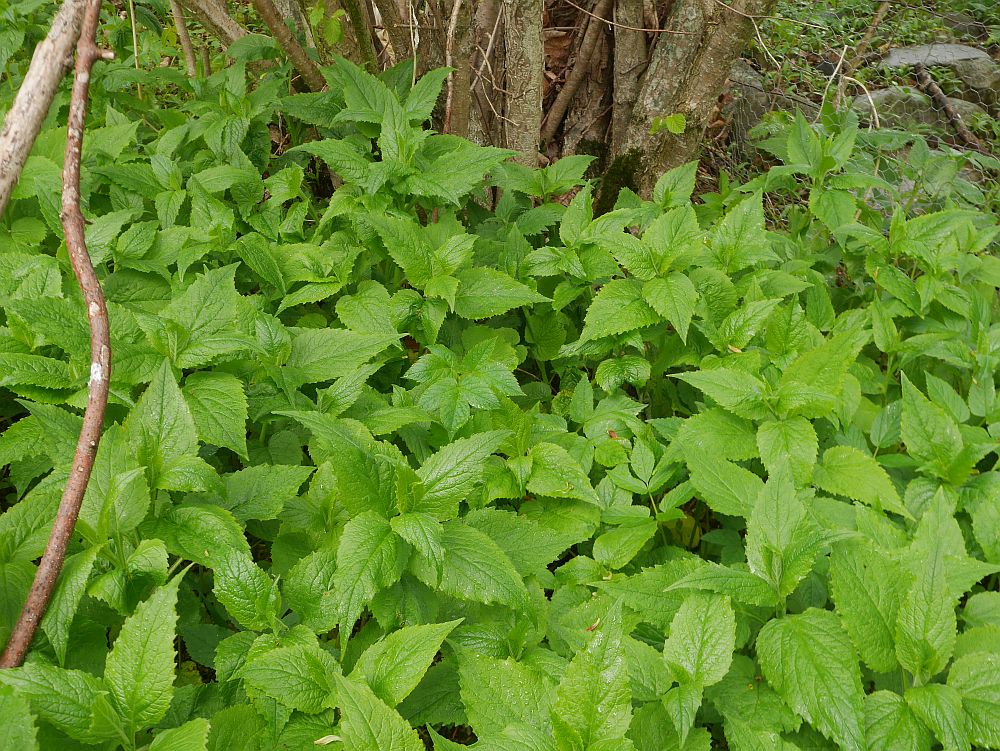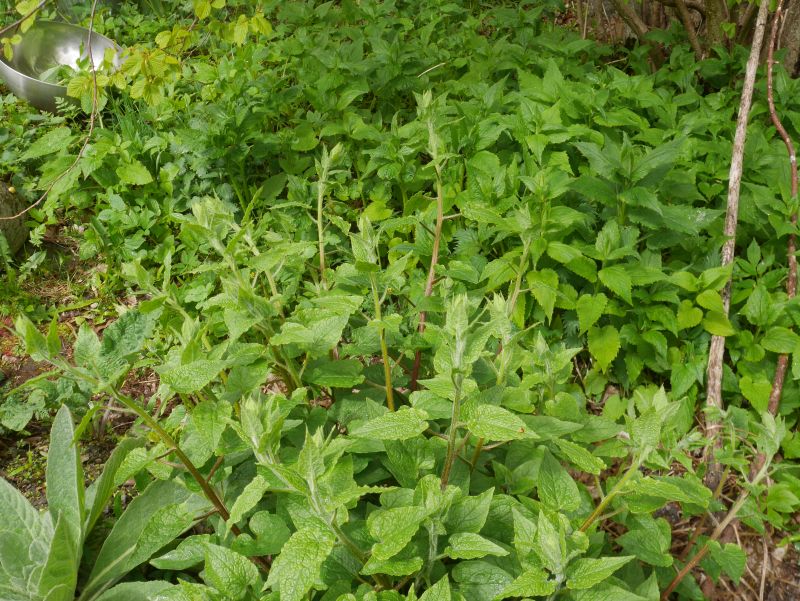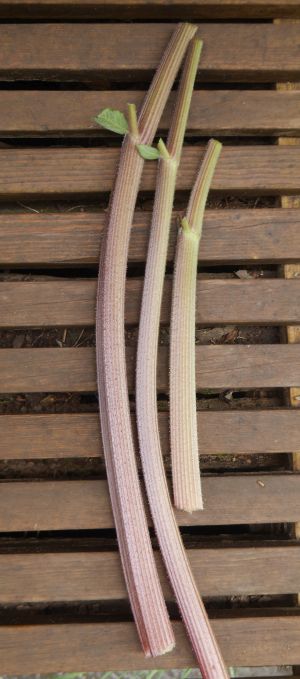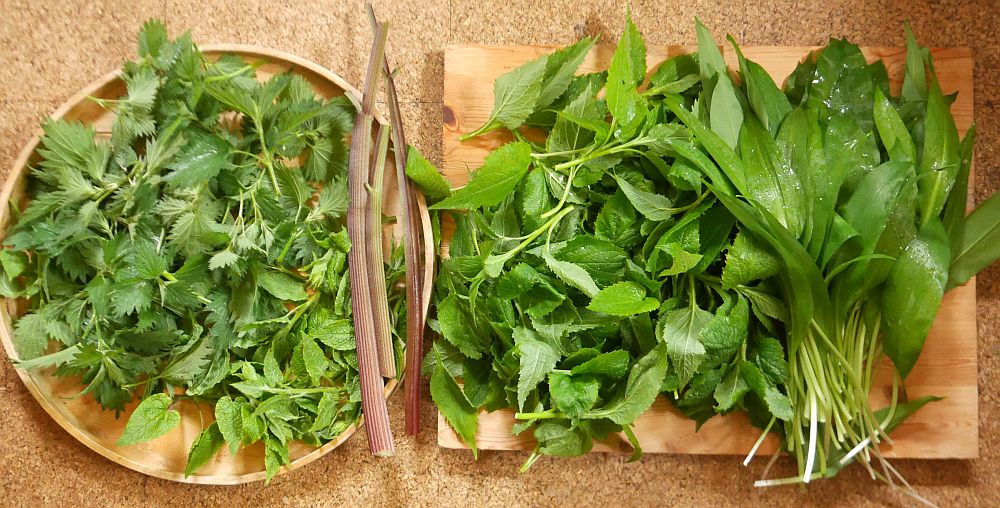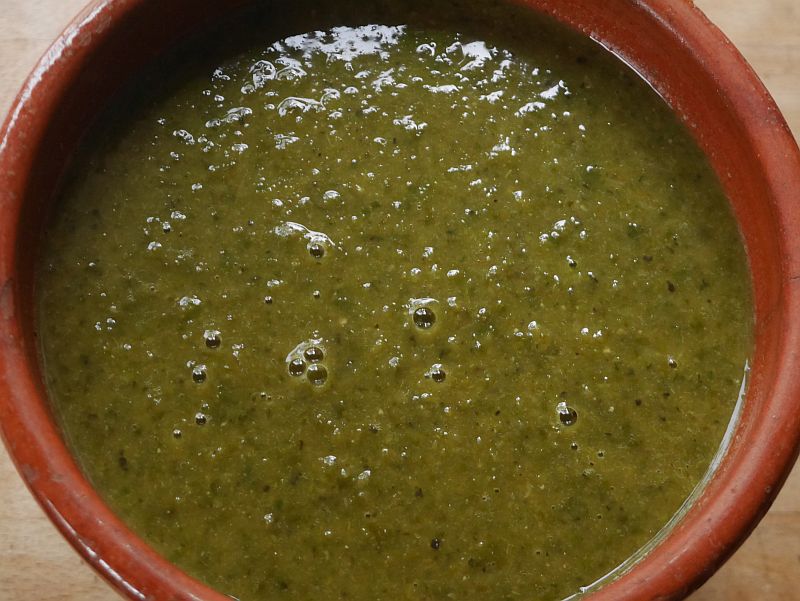Last year’s birthday dinner was the Around the World in 80 Mac-Cheese, this year’s green mac-cheese contained 68 Hablitzia shoots, 68 ramsons (ramsløk) leaves, 68 ground elder (skvallerkål) leaves and 68 stinging nettle (brennesle) shoots, with opium poppy seeds and nutty alpine bistort (harerug) bulbils on top!
The video shows me collecting the Hablitzia shoots!
Tag Archives: Aegopodium podagraria
Seven Vegetable Dishes
In Denmark’s major ethnobotanical work, Brøndegaard’s Folk og Flora (1978-80), ground elder (skvalderkål; Aegopodium podograria) is one of seven different greens used in a once common health-bringing springtime dish, skærtorsdagssuppen (skærtorsdag=Maundy Thursday) and I included this in my book as a number of perennials were among the ingredients as they are at their best around Easter when this dish was served: The number 7 is considered lucky in different cultures around the world and is often seen as highly symbolic. This Danish dish is related to the northern England dish Dock Pudding, which has very similar ingredients (see Easter Ledge Pudding in my book Around the World in 80 plants).
The number 7 is considered lucky in different cultures around the world and is often seen as highly symbolic. This Danish dish is related to the northern England dish Dock Pudding, which has very similar ingredients (see Easter Ledge Pudding in my book Around the World in 80 plants).
After my book was published I came across another seven vegetable dish from Japan, nanakusa, which contains an unusual mix of edible plants (see the first slide below – from my talks over recent years) including perennial Oenanthe javanica (seri) and as fate would have it, on my study tour to Japan, organised by my friend Aiah Noack, I was taken to a farm where they were actually producing several of these herbs (pictures below). Greenhouses full of common chickweed (Stellaria media; vassarve) was a sight I won’t forget easily! Today, 7th January, is the Festival of Seven Herbs or Nanakusa no sekku (Japanese: 七草の節句) and is the old Japanese custom of eating seven-herb rice porridge on this day.
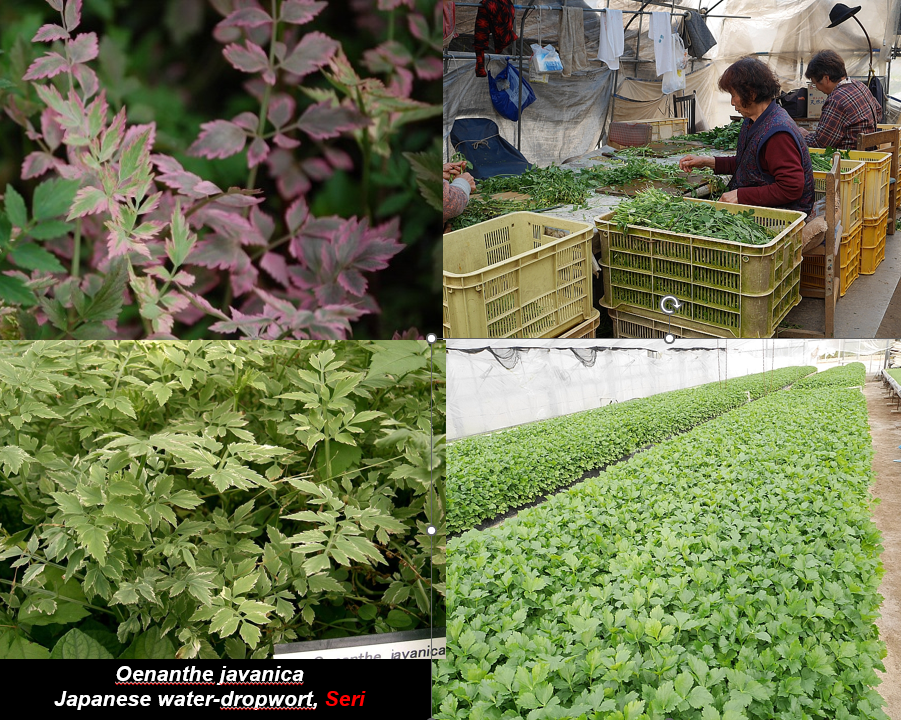
As I was writing this I wondered if there were other seven herb traditions out there and, right enough, a quick google search revealed two others (please let me know if you know of others):
Seven vegetables on the seventh day of the Chinese New Year is eaten for luck and health, a tradition perserved by the Teochew or Chaoshan people in Southern China. The following five vegetables must be included, the other two are flexible: celery, garlic, green onions, coriander and leeks.
Seven vegetable couscous: Seven is a lucky number in Jewish tradition and a dish featuring seven vegetables is a New Year favourite among Sephardic Jews (early autumn). A recipe can be seen here: https://theveganatlas.com/seven-vegetable-couscous
March soba greens
Today it reached an unusually warm 16C here which encouraged the first bumble bees and honey bees out! The picture shows the greens (and whites) used in tonight’s soba (buckwheat noodle) stir-fry:
Hogweed (Heracleum spp.) shoots (far left, from the cellar); top row: Dystaenia takesimana (outside), chicons (chicory shoots; cellar), horseradish shoots (cellar), garlic and Allium scorodoprasum shoots (outside), Allium cernuum shoots (outside); Below from L to R: Dandelion (Taraxacum) shoots from the cellar, ground elder (Aegopodium podograria) shoots (outside), lesser celandine (Ficaria verna), wild buckwheat (Fagopyrum tataricum) seed sprouts (living room), nettle shoots (Urtica dioica), hedge mustard (Alliaria petiolata) and (bottom right) Hablitzia tamnoides shoots.
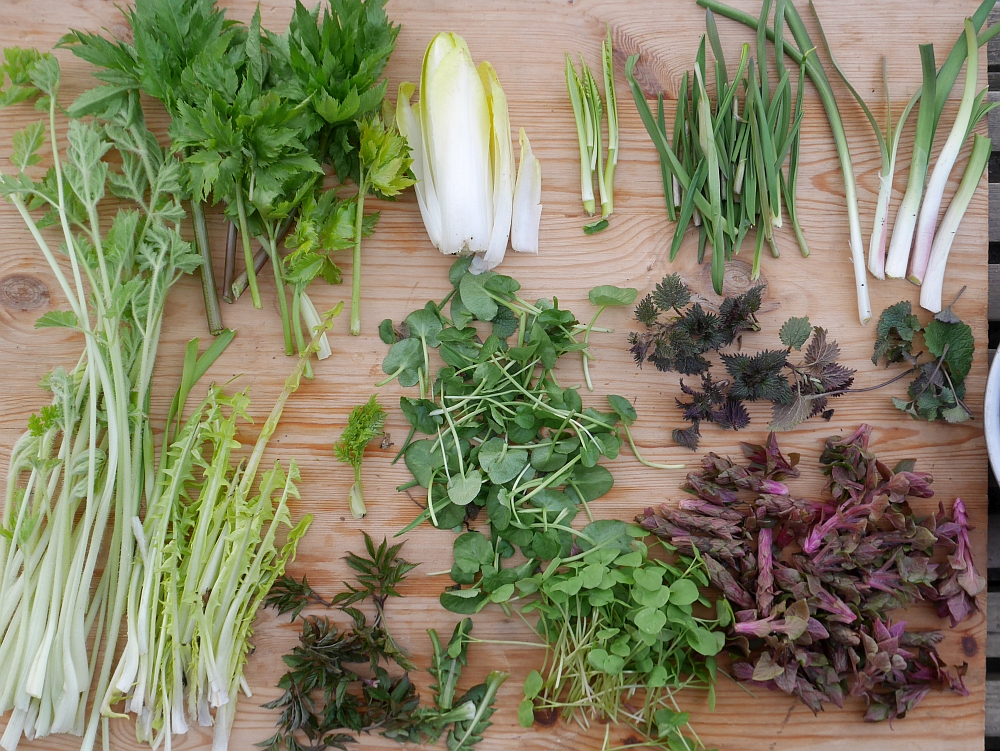
Garden wild green soup
Last night we made a green pea soup and apart from the Hablitzia (Caucasian spinach / stjernemelde), I used perennial vegetables growing in a wild part of the garden. With little or no help from me there’s a bounty of wild edibles in this area under wild hazels (Corylus avellana) and this made for a delicious pea soup with masses of greens.
Campanula latifolia is documented as used in spring soups in the 16th century in my area in Norway and Heracleum shoots are also a tradional soup ingredient, in particular Russian borsch now thought of as a beetroot soup was originally made with hogweed shoots.
JA Quiche
Jerusalem artichokes (JAs / jordskokk) in quiche? Why not?
Yesterday’s quiche included JAs, Hablitzia tamnoides (Caucasian spinach / stjernemelde), Aegopodium podograria (ground elder / skvallerkål), dandelion (løvetann), rehydrated dried chantarelles (kantarell), garlic and chili and poppy seed (opiumvalmue) topping. With a 100% whole grain Svedjerug (old Norwegian rye) and barley (bygg) crust.

Wild domesticated edibles and 65 habby days
Tonight’s omelette had more or less only wild edible perennial plants from my area in it, although all grow in my garden, managed in some way…with one exception which has been in every evening meal for 65 days now, the first in this list:
Hablitzia tamnoides (Caucasian spinach / stjernemelde)
Taraxacum officinale (dandleion / løvetann)
Allium ursinum (ramsons / ramsløk)
Campanula latifolia (giant bellflower / storklokke)
Alchemilla spp. (lady’s mantle / marikåpe)
Urtica dioica (stinging nettle / brennesle)
Aegopodium podograria (ground elder / skvallerkål)
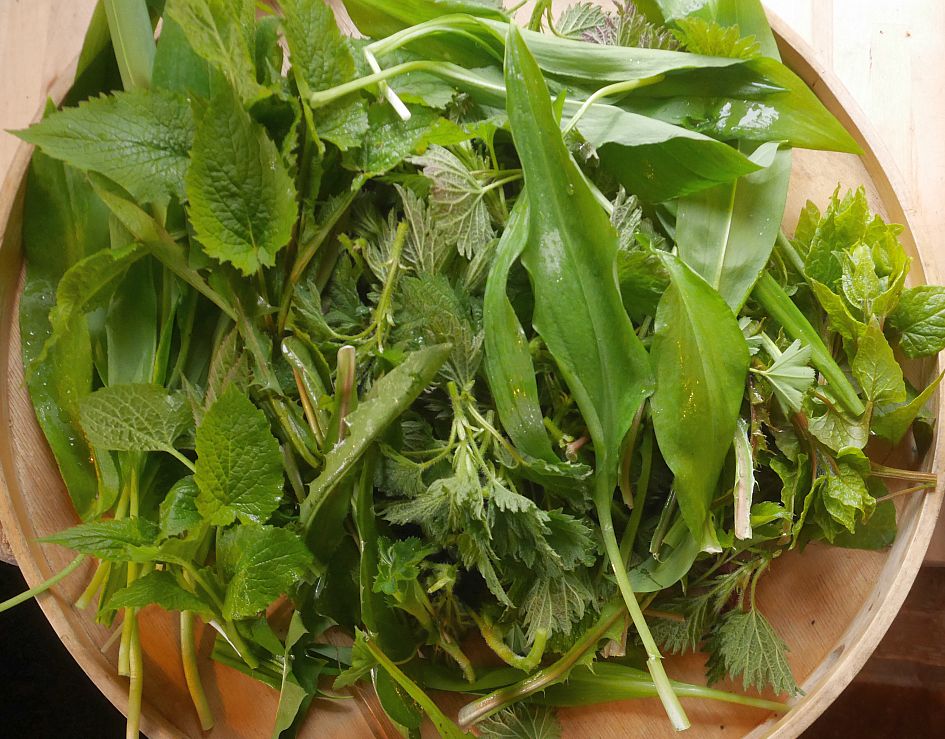
Quinoa greens
Tonight’s 22 greens from the garden with yacon used in a quinoa stir-fry (with garlic and chili in addition):
Brassica oleracea (perennial kale / flerårig kål)
Hydrophyllum virginianum (waterleaf, indian salad)
Tragopogon pratensis (Jack-go-to-bed-at-noon / geitskjegg)
Angelica spp. (kvann)
Allium carinatum
Allium ursinum (ramsons / ramsløk)
Primula elatior (oxlip / hagenøkleblom)
Hablitzia tamnoides (Caucasian spinach / stjernemelde)
Carum carvi (caraway / karve)
Myrrhis odorata (sweet cicely / spansk kjørvel)
Polymnia edulis (yacon)
Urtica dioica ( stinging nettle / brennesle)
Campanula latifolia (giant bellflower / storklokke)
Ficaria verna (lesser celandine / vårkål)
Rumex acetosa (sorrel / engsyre)
Dystaenia takesimana (giant Ulleung celery)
Hemerocallis spp. (day lily / daglilje)
Taraxacum spp. (dandelion / løvetann)
Rheum ribes
Armoracia rusticana (horseradish / pepperrot)
Allium nutans
Aegopodium podograria (ground elder / skvallerkål)

More perennial vegetables for dinner!
A new collection of perennial vegetables from the garden on 25th April 2020, now back to cool, overcast weather. All are managed in some way.
Carum carvi (caraway / karve) greens
Urtica dioica (nettle / nesle)
Aegopodium podograria (ground elder / skvallerkål)
Allium fistulosum (Welsh onion /pipeløk)
Hablitzia tamnoides (Caucasian spinach / stjernemelde)
Campanula latifolia (giant bellflower / storklokke)
Myrrhis odorata (sweet cicely / spansk kjørvel)
Allium ursinum (ramsons / ramsløk)
Taraxacum spp. (dandelion / løvetann) 
Today’s perennial catch
23rd April 2020 perennial greens used in a delicious quiche (eggepai):
Hablitzia tamnoides (Caucasian spinach / stjernemelde)
Myrrhis odorata (sweet cicely / spansk kjørvel)
Rumex acetosa (sorrel / engsyre)
Campanula latifolia (giant bellflower / storklokke)
Urtica dioica (stinging nettle / brennesle)
Allium senescens
Heracleum sphondylium (common hogweed / kystbjørnekjeks)
Aegopodium podograria (ground elder / skvallerkål)
Naturalised Giant Bellflower
No doubt introduced by the previous owners here as an ornamental and despite the fact I spent a lot of time trying to eradicate it from parts of the garden, Campanula latifolia (giant bellflower / storklokke) is nowadays one of my most important springtime vegetables used both cooked and raw. It has naturalised under Hazel in part of the garden! Always nice to see how plants find their own way to the best spots it grows happily alongside Aegopodium podograria (ground elder / skvallerkål). See the excerpt from my book Around the World in 80 plants below.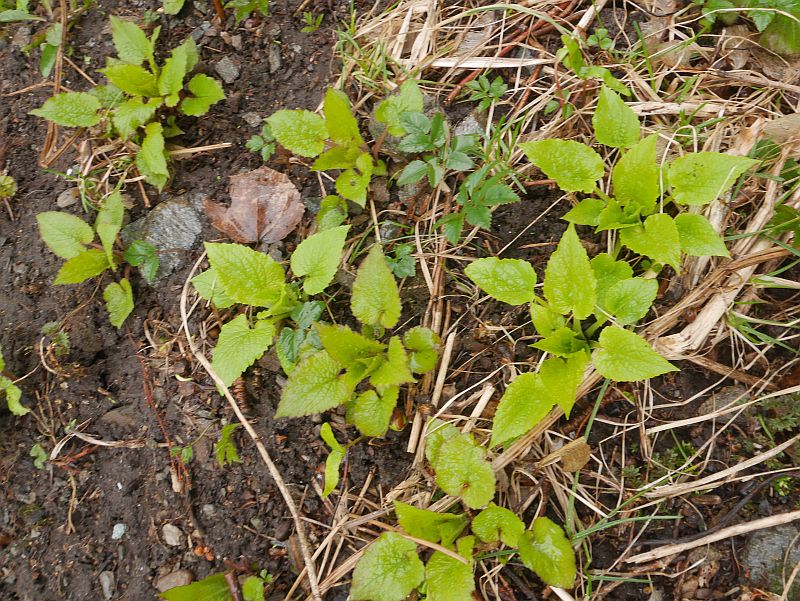
 Here is the excerpt from Around the World in 80 plants (I’m happy to send signed copies within Norway). “When I first moved to my present garden, there was one weed that I struggled to eradicate from my cultivated beds, Campanula latifolia or giant bellflower. The roots in particular were almost impossible to dig out, having a knack of germinating in the most difficult places. Then, one day I was reading the Norwegian book “Gratis Mat av Ville Planter (Free Food from Wild Plants; Holmboe, 1941). I learnt that my worst weed had been wild gathered for food by farmers in my area in the 17th century, a tradition which probably died out soon afterwards. The leaves and stems were collected in springtime and made into a soup. Similar stories have also survived from other parts of Norway and Sweden. Storklokke (literally large bell) is considered to be one of the most commonly used wild food plants in the past in Norway. Both the leaves and roots were used, the latter also ground and added to bread.”
Here is the excerpt from Around the World in 80 plants (I’m happy to send signed copies within Norway). “When I first moved to my present garden, there was one weed that I struggled to eradicate from my cultivated beds, Campanula latifolia or giant bellflower. The roots in particular were almost impossible to dig out, having a knack of germinating in the most difficult places. Then, one day I was reading the Norwegian book “Gratis Mat av Ville Planter (Free Food from Wild Plants; Holmboe, 1941). I learnt that my worst weed had been wild gathered for food by farmers in my area in the 17th century, a tradition which probably died out soon afterwards. The leaves and stems were collected in springtime and made into a soup. Similar stories have also survived from other parts of Norway and Sweden. Storklokke (literally large bell) is considered to be one of the most commonly used wild food plants in the past in Norway. Both the leaves and roots were used, the latter also ground and added to bread.”
It was the nephew of Bishop Gunnerus (after whom the genus Gunnera was named) who published this in Norway’s first flora published 3 years after the Bishop’s death! It was stated that “storklokke” deserves to be considered as one of the best springtime greens! I totally agree! Thanks to the previous owners (Johansen) for planting it for me!





